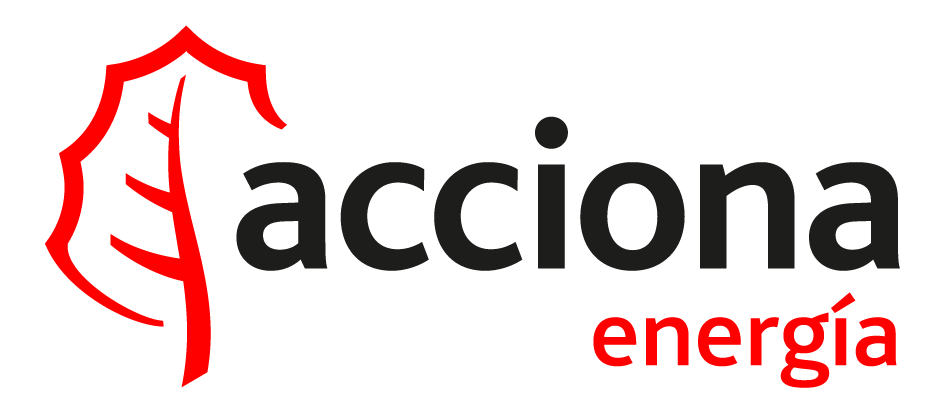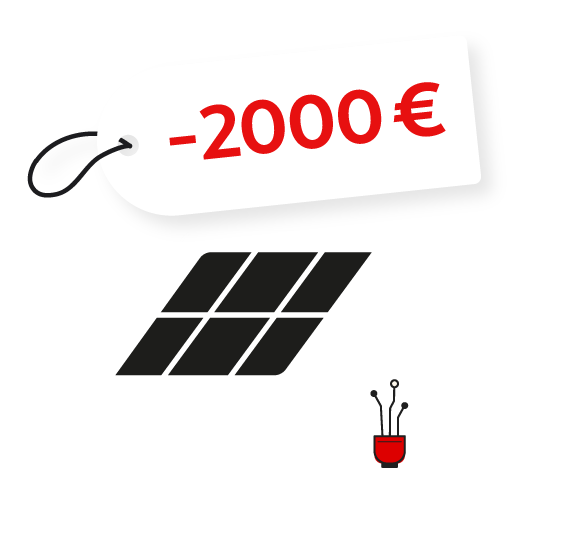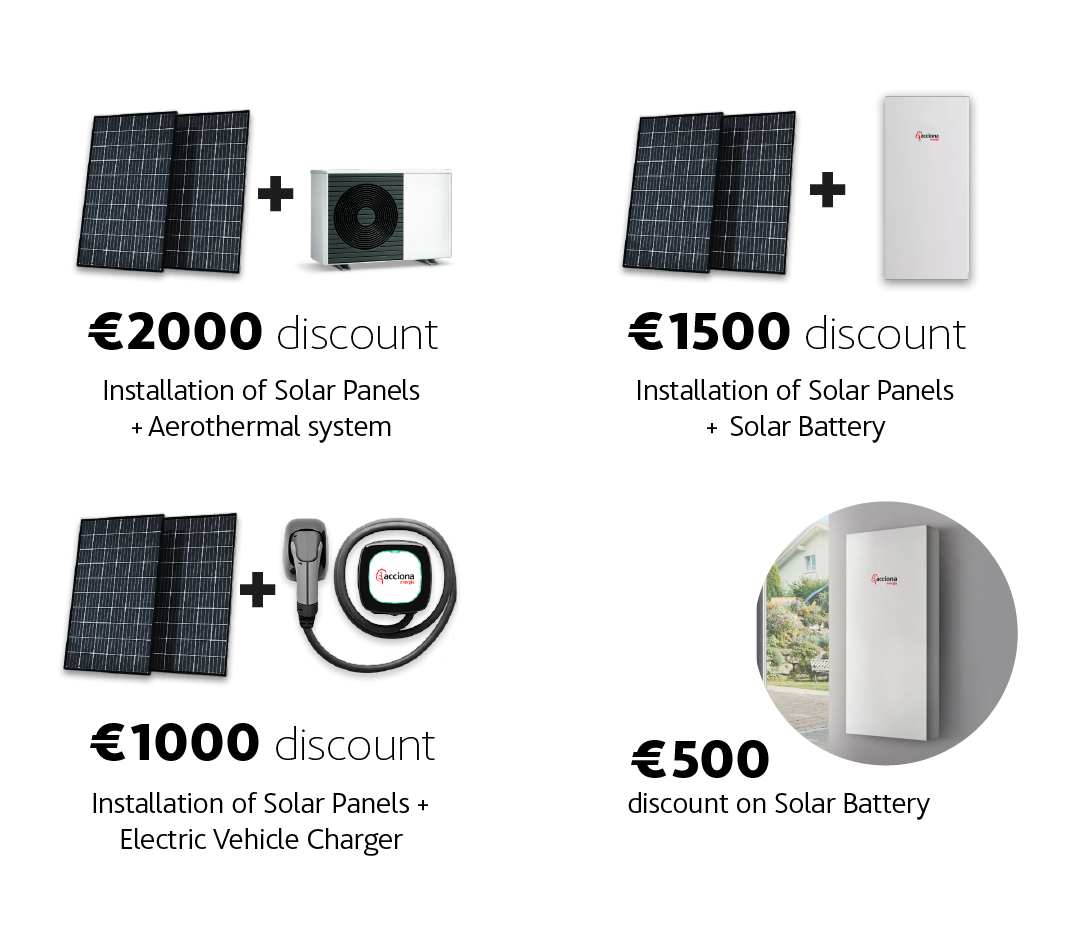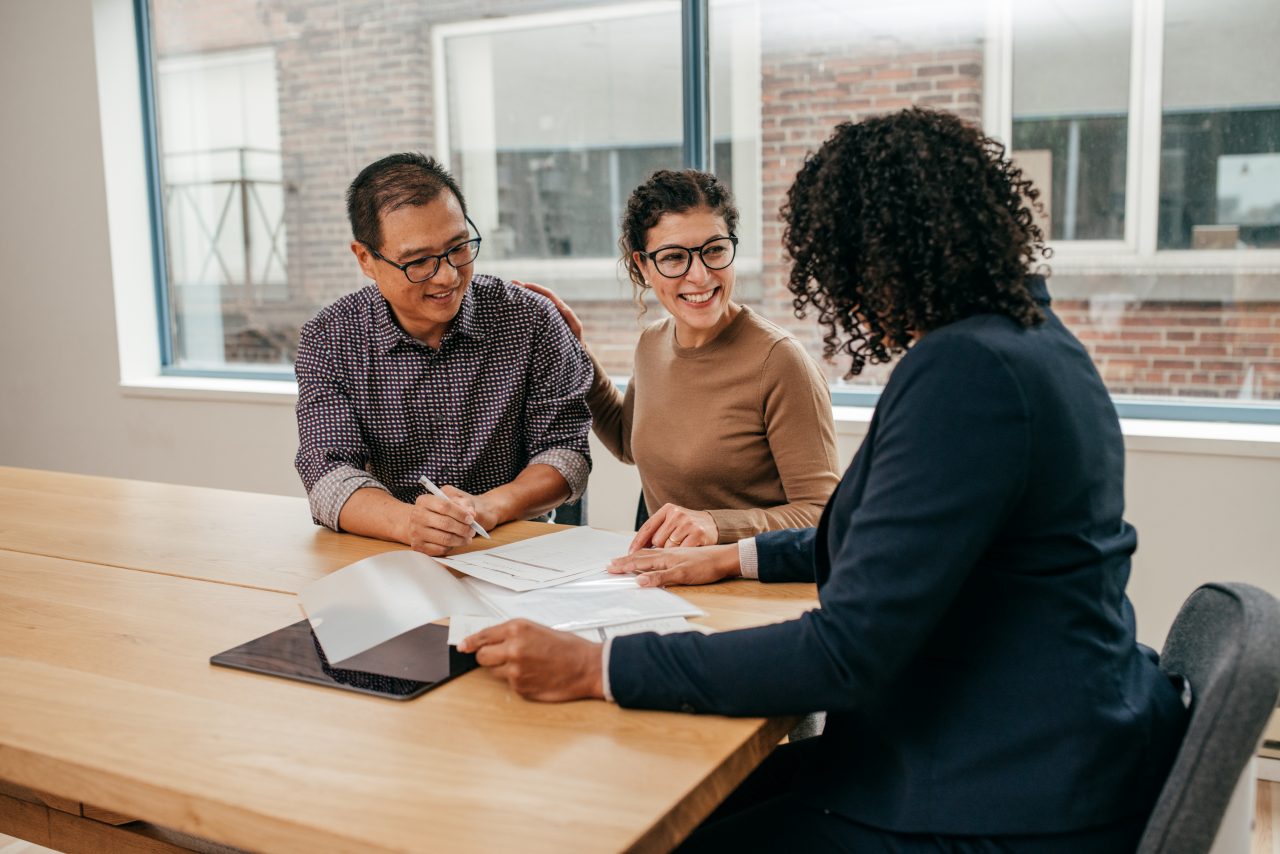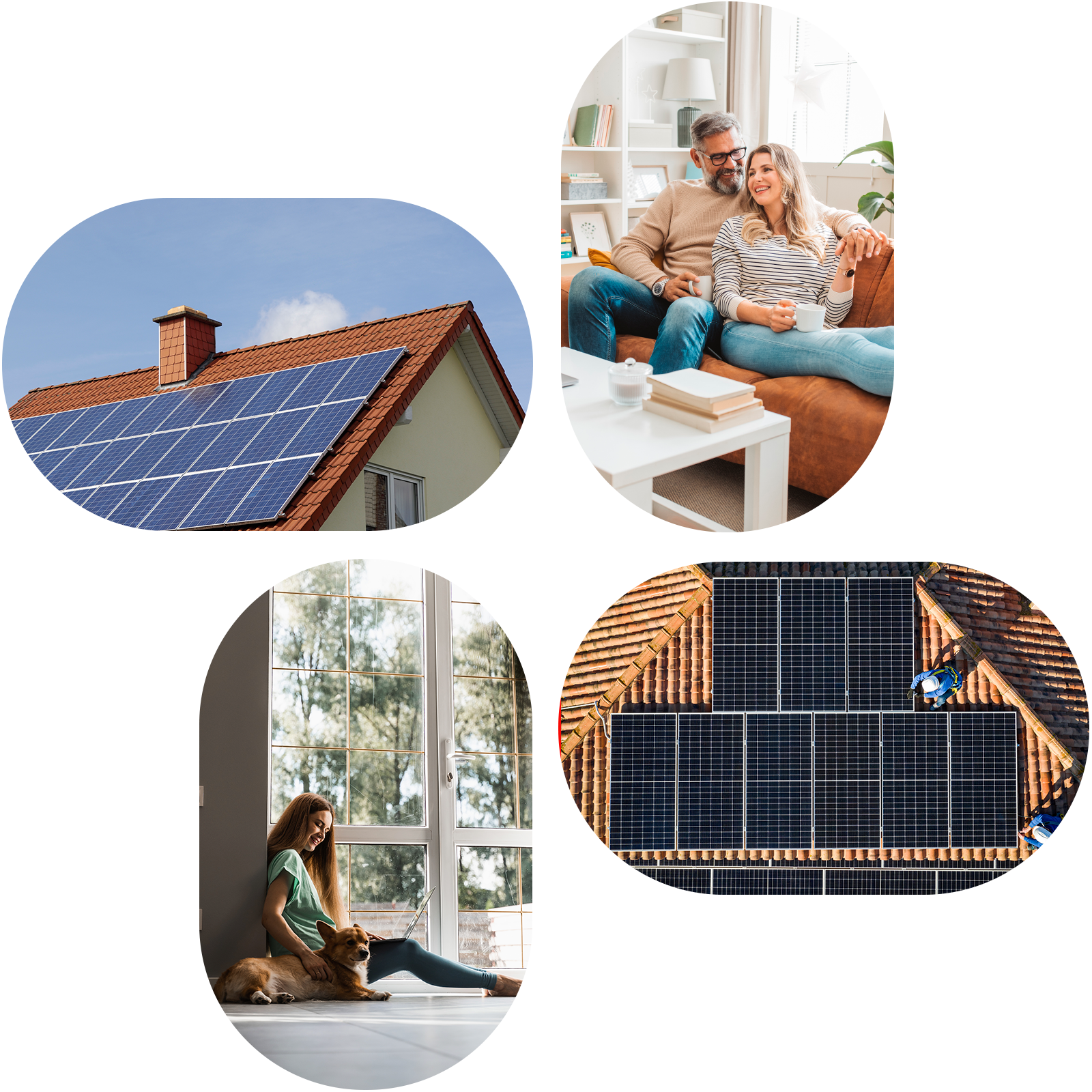JOIN SELF-CONSUMPTION
Save with solar energy
Create a sustainable and efficient home with solar energy.
PAYMENT METHODS
Choose the best option for you!
Pay for your solar panels with your monthly savings
SOLAR ENERGY IN YOUR HOME
Your installation in 4 easy steps:
Capturing the sun's energy has never been easier.
OUR COMMITMENT
Why install your solar panels with ACCIONA Energía?
You provide the roof and we provide the solutions.
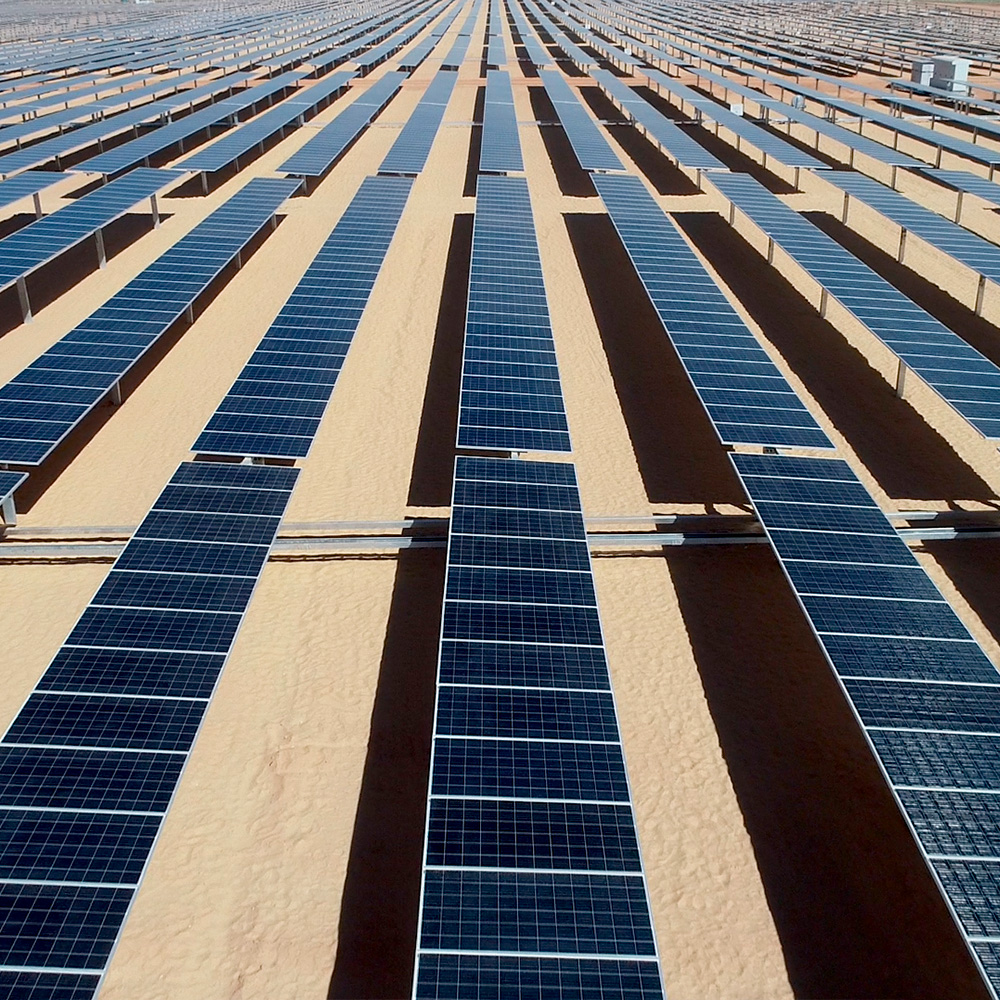
A STRONG TRACK RECORD
A global energy operator that has worked in renewables since its creation.
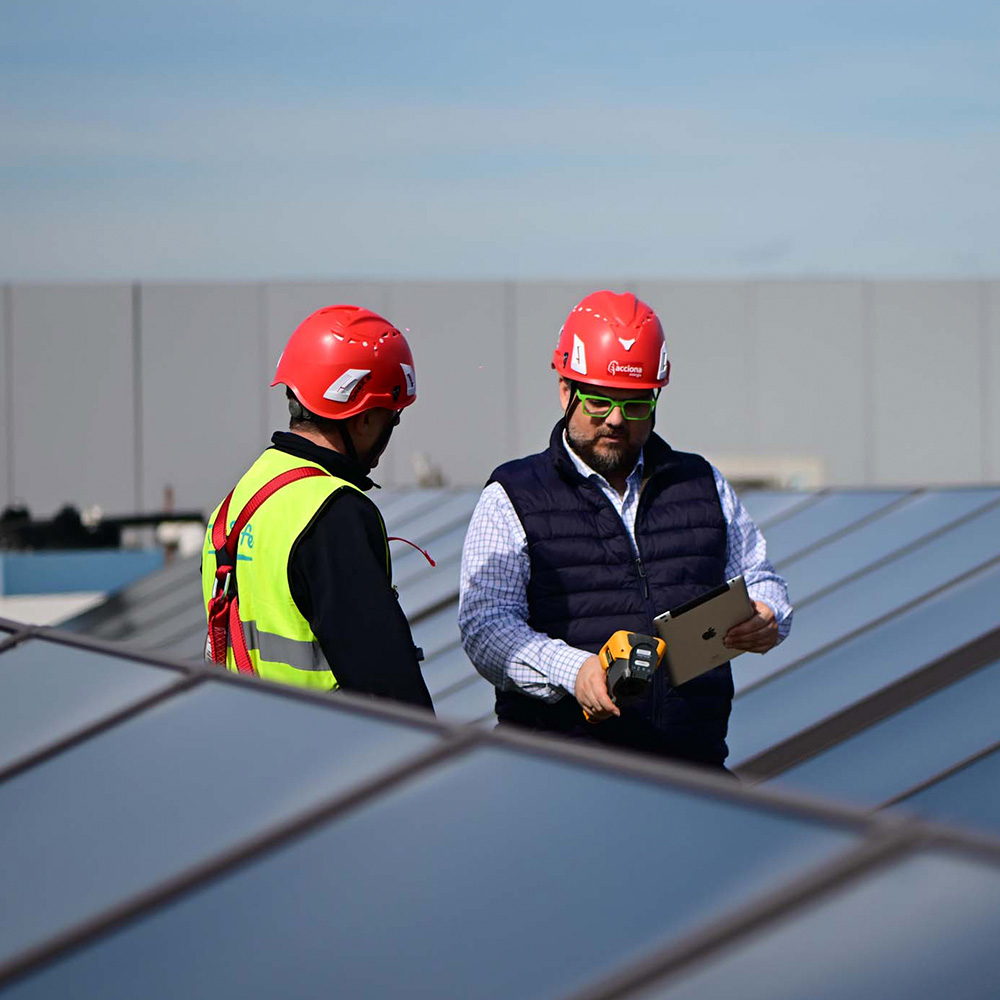
TAILOR-MADE FINANCING
We give you the option to finance your energy project so that you can benefit from the savings as soon as possible.
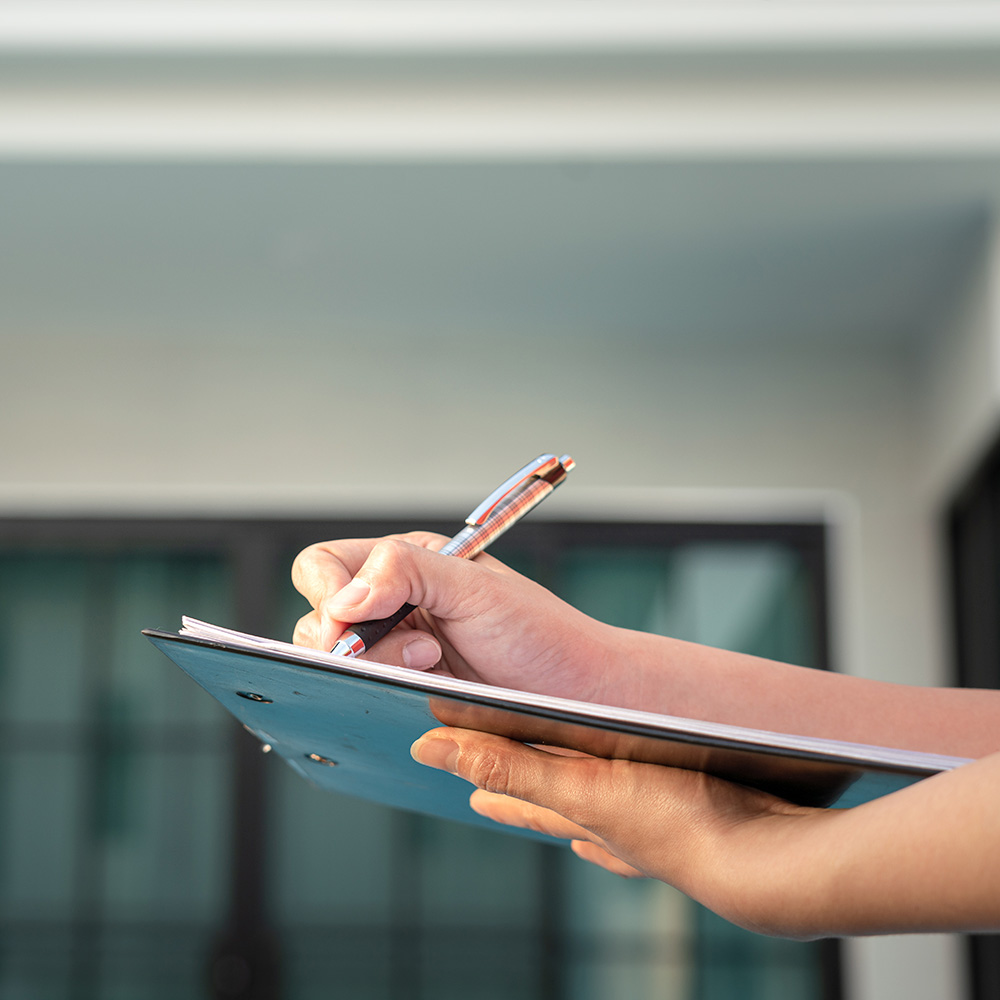
HASSLE FREE WHILE TAKING ADVANTAGE OF SUBSIDIES
We take care of all the paperwork so you don't have to.
WHY US?
What our customers say
INCREASE YOUR SAVINGS
Complete your solar panel installation

VIRTUAL BATTERY
Compensation of surplus
Accumulate your surpluses in our virtual battery and offset the amount on your bill whenever you want.

MANTENIMIENTO INTEGRAL
Maintenance services
Ensure that your system operates optimally all year round with our solar panel cleaning and maintenance service.
JOIN SELF-CONSUMPTION
Request your free assessment
Our team of experts will prepare a tailored proposal to meet your needs, so you can start saving while taking care of the planet.
Let's Talk?
Leave us your number and we'll call you back free of charge
Business hours: M-F 8:00 a.m. to 8:00 p.m.
QUESTIONS AND ANSWERS
Solve all your questions
-
01
What requirements do I need to install solar panels at home?
At the technical level, only a few conditions are necessary:
To have in the building or in the property a surface of more than 20 m².
To have a roof or a rooftop with a sufficient surface to install the solar panels. Rounding up, each panel is 2 meters high and 1 meter wide. Therefore, 2 m² of space per panel. With this data, you can draw conclusions about the number of panels that could fit on your roof.
The area should have maximum exposure to sunlight and, if possible, be free of shadows. It is therefore recommended to install solar panels on roofs, decks and terraces of buildings.
The roof must be in good condition to ensure the maintenance of the solar panels, which have a useful life of 35 years or more.
Photovoltaic solar panels are compatible with virtually all types of roof tiles: wood, concrete, composite, tar, gravel, slate and metal. But clay, wood and slate tiles are less resistant and, to avoid breakage, it is advisable to hire experienced and guaranteed installers, such as ACCIONA Energia.
-
02
What permits do I need to install solar panels at home?
There is no state legislation that prevents, prohibits or fines for the installation of solar panels in private homes. On the contrary, nowadays, the installation of solar panels for self-consumption by the public administration is encouraged to the maximum. What we can find is some particularities at a local level. In any case, ACCIONA Energia controls all legal requirements and advises its customers to make the best choice in each case.
It is important to note that most photovoltaic installations require a very simple application for minor works to the City Council, called “prior communication”. Fortunately, it is not necessary for the City Hall technician to review the project, which can delay the process between 1 and 3 months. The current law allows the installation of solar panels only by notifying the City Hall that it will be carried out.
-
03
Do I need a new meter when I install solar energy?
In principle, no. The digital meters that were changed to all of us a few years ago already allow the use of a photovoltaic installation of self-consumption. If, for some strange reason, you still have an old analog meter, we explain what steps to take so that your electricity distribution company can change it for you.
-
04
Does the sun tax still exist?
No. The sun tax was a setback in Spain's energy transition towards photovoltaic self-consumption. However, this access toll was repealed in 2018, facilitating the expansion of solar panel installations in Spain.
On October 5, 2018, three years after its introduction, the end of the controversial sun tax was announced. It also added a series of reforms to encourage the use of solar energy in Spain. The following year, the current regulations of Royal Decree 244/2019 were approved, with the aim of simplifying administrative procedures. Some of the most important reforms to encourage self-consumption have been:
Elimination of the generation meter in photovoltaic installations without discharge.
Installations with a power of less than 15 kW on urbanized land, as well as isolated installations, were exempted from requesting permits from the electricity company.
Approval of the compensation and sale of self-consumption energy surpluses for installations of less than 100 kW.
Approval of collective self-consumption: possibility of sharing a photovoltaic installation among several people.
-
05
What is the price of home solar panels?
The price of photovoltaic solar panels has dropped 80% in 5 years. Currently, a photovoltaic installation can start at 4,000 euros. There is also the possibility of 100% financing of your installation, as well as European subsidies and state bonuses, such as the IBI rebate in most cities in Spain.
-
06
How long does it take to amortize solar panels?
The amortization of a photovoltaic installation, at current electricity prices, is achieved in a period of 3 to 5 years.
-
07
How much does it cost to install solar panels on a country house?
The first thing we need to know to size this installation is how much energy your cottage actually consumes. The best way to do this is to add up all the average usage of electrical devices and appliances. Once you know how much power you'll need when you're in the cottage, you need to think about how long you'll be staying in the cottage.
There may be some things you want to keep running when you're away, such as the refrigerator. So, just as above, you now need to figure out how much energy you will use when you are not there.
-
08
How does solar energy work?
A photovoltaic system produces clean electrical energy from sunlight to help you save money on your electricity bill and reduce your carbon footprint. The physical principle of operation is that photovoltaic panels have the ability to convert photons of sunlight into electrons and thus electricity. The electricity generated by the PV panel is direct current (DC). Therefore, we must convert this electricity to alternating current (AC) in order to use it in our homes. This conversion is generated by the inverter.
In this way, solar energy produces electricity for your home to power everything that is connected to your home's internal electrical grid. If you do not use the solar energy as it is generated, it is automatically sent to the grid and, through a connection we make to your electricity meter, you will sell your surplus to the electric company, which by law is obliged to buy it.
If you are using more energy than the photovoltaic installation generates, it will automatically take the energy from the grid at your contracted rates, as you have done so far before your photovoltaic installation.
-
09
Does solar power work on cloudy days?
A photovoltaic system does not only work at its maximum capacity. In low light conditions, such as in the early morning hours or when it is cloudy, the solar panels will still be able to convert light into energy for your home, only with less capacity, since we will have less light.
For example, a 4 kW system may only produce 2 kW of power on a cloudy day. There is a point at which the energy produced is no longer strong enough to power the inverter and the system shuts down. This happens every night and perhaps during a particularly dark storm. For all other situations, we will always have our PV system providing us with one level of energy or another.
-
010
How many years do photovoltaic panels generate solar energy?
Solar panel manufacturers design and manufacture solar panels to last 30 to 40 years (rapid aging tests in laboratories show this to be true). This does not necessarily mean that solar panels stop working “all of a sudden” after all these years. As such, there is no programmed obsolescence in solar panels, since they are basically based on passive electronics.
What it means is that their production for the same solar energy will decrease, slowly, but year by year, so that after 30 or 40 years, they will no longer fully satisfy the energy needs of your home. Therefore, solar panels do not stop working or break (if it is not due to an external effect such as a blow), but their capacity to generate energy will decrease little by little and year by year, until it really reaches a level where replacement is recommended.
Taking into account that we are making such a long-term investment, from ACCIONA Energia we always recommend installing good quality solar panels (premium range) and from a good manufacturer to ensure that this annual loss of energy generation is very low and allows us to reach the 35 or 40 years of life of the installation with a strong and resilient behavior, which does not necessarily require its imminent replacement.
Typically, premium panel manufacturers offer degradation rates ranging from -0.3% to -0.8% per year, averaging -0.5% per year. In other words, they age by losing only the ability to capture the sun's energy at an average rate of 0.5% performance loss per year.
As can be seen, this is a very low value, since in 10 years we will only lose 5% of the energy capture capacity and we will be at a capture level of 88% of its original capacity after 25 years, the time when they have their triple guarantee.
-
011
In which direction should my solar panels face?
For installations located in the northern hemisphere, solar panels will generate the most energy over the course of a year when facing SOUTH.
-
012
Does a solar power system work in a grid outage?
For safety reasons and European regulations, your solar system shuts down in the event of a power outage. If the system did not shut down automatically, a grid utility operator could be electrocuted while performing the power outage repair. When grid power is restored, the microinverters also resume their activity and start working properly again. On some very remote occasions this automatic restart may not take place. When this happens, please contact us. We will perform the reset remotely.
-
013
Why do two photovoltaic panels of the same installation produce different energy?
One of the big problems of using a photovoltaic installation with a central inverter (without microinverters) is that all the panels generate the energy of the one that can generate the least energy. That is, if for some reason (dirt, a shadow, bird droppings, etc.) a photovoltaic panel can only generate 80% of its electrical potential, with a central inverter, ALL the photovoltaic panels generate only 80% of their electrical potential. This inefficient and common situation does not happen with microinverters, since each microinverter seeks the maximum operating point of each plate independently: there is no correlation or dependencies between the different plates.
-
014
What is Power Line Communication or PLC?
The system that we install in your house has a set of advanced and very efficient communication systems. In this sense, we have a communication between the microinverters and the control and monitoring equipment that, using the electrical wiring of the installation, talk periodically to exchange information. Thanks to the use of PLC (Power Line Communication) technology, the system transmits information through the electrical cables. In other words, with a single electrical pair (two wires) we transmit energy and data, all in one. This minimizes the complexity of the installation, reducing wiring and connectors.
Typically, less advanced technologies require two electrical pairs for power supply or power transmission and two additional electrical pairs (at least) for information transmission.
-
015
What is surplus compensation and what does it do for us?
The compensation of surpluses is the capacity of a photovoltaic installation to inject into the public electricity grid that energy that is not instantly used in the home or company that uses the installation. By law, the commercialization company must subtract from our bill that energy that we deliver to them. This is called surplus compensation.
There may be times of the day when the energy generated by our photovoltaic panels is less than what our house needs. In this case, the ACCIONA Energia installation is prepared to automatically and transparently capture the missing energy from the grid and, without us noticing it, capture energy from both sides (first from the sun and then from the grid).
The possibility of discharging these surpluses into the electricity grid and receiving financial compensation in return is possible thanks to having a photovoltaic installation prepared for this purpose and to the bureaucratic procedures with the supplier and with the public administration.
-
016
Why does the choice of microinverters give us a plus in safety?
Photovoltaic systems are not, by themselves, dangerous. That said, it is important to note that for solutions NOT based on microinverters (i.e. using a central inverter), the DC voltages generated can be very high, close to 1,000 Volts. When these levels of DC voltage are present, if there is a damaged cable or a poorly executed electrical connection or one that degrades over time, large electrical arcs (commonly called “sparks”) can be generated which, in certain and obviously remote but feasible circumstances, can cause fires. Let's look at some examples of DC arcs:
Having such high DC voltage levels circulating around the house is also not recommended in case there is, at some point, an improper manipulation or carelessness in its use, since these levels are high enough to cause very serious injuries by electrocution. If we have small children at home, we would recommend it even less.
Solutions based on microinverters avoid having such high DC voltage levels, since we always work in all wiring lines, at 230 Volts AC. No more, no less. That is to say, the 230 Volt current that we have in the sockets at home and that we know from experience that they do not generate, in any way, this type of electric arcs and an electrocution does not produce injuries.
Therefore, microinverters give us a plus in safety in our home and our family with respect to central inverter systems by NOT using high levels of direct current: microinverters work with alternating current and 230 Volts. This allows us to be sure that, if in the future a wiring or an electrical connection is degraded for any unexpected reason, we will never have arcs of great magnitude that could generate a fire in our house. Let us always remember that a photovoltaic installation has a life expectancy of 35 or 40 years and that, therefore, we have many years ahead of us for unexpected and unplanned situations to occur.
-
017
How is the photovoltaic installation in a single-family house carried out?
First, the installation company studies the factors of the house: dimensions, installation area, roof pitch, location of the building, current electricity consumption and power contracted, type of heating and approximate electricity costs. With these data, the customer is asked what type of installation is needed and advice and information on legal benefits are given. Once a specific installation is made, different components are installed over a period of 1 to 3 days.
-
018
How many solar panels do I need for a 100 m² house?
The number of solar panels that your house will need will depend a lot, apart from the square meters, on how many people live in the house and consume energy, the geographical area or the orientation of the house itself. However, it is estimated that in a house of 100 m² where 4 people live, about 3,000 kWh are spent annually.
For that amount of electricity, 5 and 7 photovoltaic solar panels will be needed, since the average solar panel produces a maximum of 550 kWh per year.
-
019
How many solar panels do I need for a 200 m² house?
As we have explained in the previous point, the number of solar panels needed for a house does not depend so much on the square meters as on other factors such as the consumption of all the people living in the house, the geographical area, the orientation of the house, etc. Although these circumstances make each case vary a lot, statistics show that houses of 200 m² in Spain need about 10 solar panels.
-
020
I have a three-phase installation, can I install a self-consumption photovoltaic system?
Yes, without a doubt. ACCIONA Energia also has extensive experience in the installation of systems with three-phase network for both companies and homes.
-
021
Can I expand a solar installation after a few months or years?
Si tienes previsto ampliar de forma gradual la instalación fotovoltaica, lo que modera la inversión inicial, recomendamos de nuevo que instales un sistema basado en microinversor. La arquitectura que dejaremos lista con la tecnología de microinversores te permitirá hacer crecer tu instalación, incluso de una placa a una placa, sin tener que modificar la instalación existente (solo será necesario actualizar tu interfaz web/móvil para que el nuevo panel solar pueda añadir tu aplicación).
